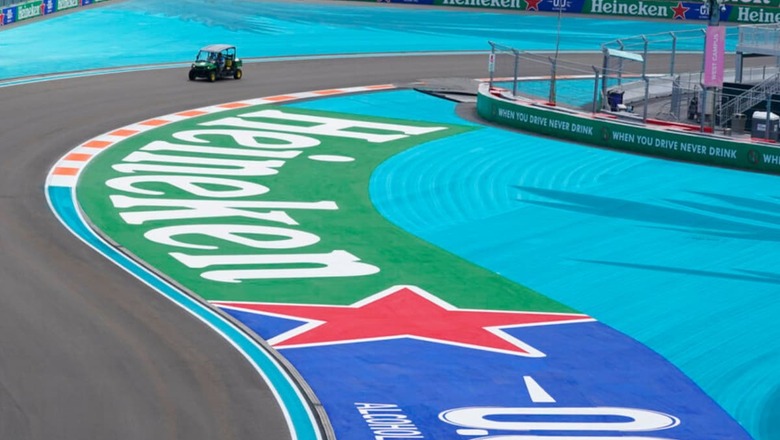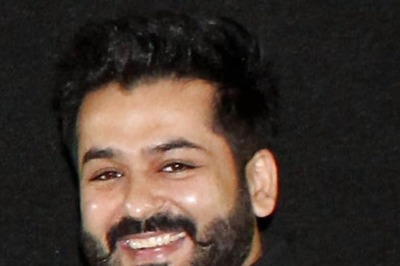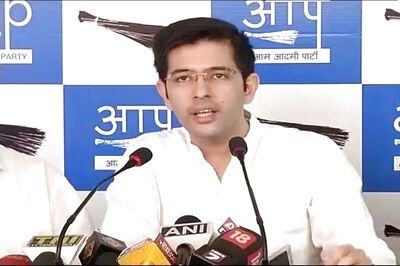
views
Depending on who you listen to, Sunday’s Miami Grand Prix will either be a Formula One race squeezed into an NFL stadium car park or the much anticipated, inaugural event at the brand-new Miami International Autodrome.
Both descriptions are true and rarely has the American phrase “Fake it until you make it” been as appropriate as for F1’s debut in South Florida.
IPL 2022 – FULL COVERAGE | SCHEDULE | RESULTS | ORANGE CAP | PURPLE CAP | POINTS TABLE
The “campus”, on the grounds of the Miami Dolphins’ Hard Rock Stadium, hosts a “Beach Club” where there is no beach and, most noticeably of all, a Marina without water.
The “yacht club” does boast real yachts, but the impressive vessels sit on concrete blocks above a special vinyl surface designed to look like gently rolling waves for television cameras.
Yet, like pretty much everything created for the race, it somehow seems to work.
The decision to build the track up to an hour’s drive away from South Beach or downtown Miami came after organisers were unable to find a way to set up F1 in the heart of the city but they have pulled out the stops to incorporate the “look and feel” of the tourist destination.
The venue doesn’t feel like a car park at all, packed with 137 tents, 53 hospitality venues, 10 grandstands and, of course, the racetrack itself.
It looks and feels like an F1 race track and should be bustling with noise and atmosphere throughout the weekend.
It won’t drive like a “car park” race either. Unlike past efforts in parking lots, such as in Caesar’s Palace in Las Vegas, the Miami track is a properly constructed, hi-tech, F1 surface.
TOP CHEFS
But with DJ’s providing the soundtrack when the engines are switched off, top local chefs dishing up the food and celebrities to be spotted, organisers have clearly set out to create an event venue for the corporate set as much as a race circuit.
“It’s almost a Disneyland-like campus, with so many opportunities for great experiences with friends, whether that’s through music, drinks, all kinds of different things,” said Tom Garfinkel, managing partner of the Miami GP and CEO of the Miami Dolphins.
Garfunkel believes the way to turn Americans, particularly South Floridians, into F1 fans is to show them a good time and then expose them to the sport.
“When people come out and enjoy those experiences, there’s going to be the world’s best auto racing going on around them. I think educating them about that auto racing and giving them that experience is going to turn them into Formula 1 fans pretty quickly. F1 sells itself,” added Garfunkel.
The Dolphins organisation has experience in making the most of its real estate — since 2019 the venue has hosted the Miami Open ATP and WTA masters series tennis tournament.
The stadium itself is expected to be one of the host venues for the 2026 soccer World Cup which will be held in the United States, Mexico and Canada, and local organisers have even been pitching to stage the final.
Critics may question the authenticity of the venue for motor racing, compared to some of the classic racetracks elsewhere in the United States, but in many ways there is something very Miami about the whole venture.
After all, large parts of the city are built on reclaimed land and there is certainly nothing alien to South Floridians about planting palm trees, pointing to yachts and counting up the dollar bills.




















Comments
0 comment